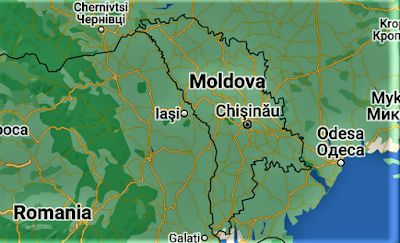For the first time, Moscow explicitly cites the Sephratist area of Transnistria as one of its objectives in a public statement. While the Moldovan prime minister works to expedite the country’s application for EU membership.
This includes not just the Donbass, but also the whole of southern Ukraine. As a result, Transnistria, the pro-Russian breakaway enclave in Moldova, was established. This would be the strategy for Russia’s so-called phase 2 of the conflict, which has already begun. Rustam Minnekayev, the deputy commander in charge of the Moscow military district’s central military region, made the announcement at a press conference. “St. George’s ribbon” and other Russian-issue symbols used by Russian forces during the invasion of Ukraine are among the symbols banned in Moldova, according to the country’s Foreign Ministry, which issued fiery statements criticizing the country’s decision to ban the display of the orange and black “St. George’s ribbon” and other Russian-issue symbols used by Russian forces during the invasion of Ukraine.
An unnamed senior Russian official has spoken publicly for the first time since the invasion of Donbass about a plan that does not stop at the “humanitarian mission” in the region, but envisaged an expansion to Odessa and from there to another former Soviet state, specifically the Republic of Moldova. One of the reasons for this is that the threat came in the midst of negotiations between Chisinau (the Moldovan capital) and Brussels to expedite the country’s EU accession process: today, Prime Minister Natalia Gravilita announced that the first part of a questionnaire that will be submitted to the European Commission in order to obtain the status of candidate country for accession, which is the same step that Kiev is undertaking. But what is Putin’s motivation for attempting to seize Transnistria?
A Moldovan Donbass?
Transnistria is a tiny separatist enclave in eastern Ukraine with its capital in Tiraspol that is not recognized by any of the United Nations member states (including Moscow). It was formed as a result of an armed revolt after the collapse of the Soviet Union in 1992. Russian military are stationed on the land of what is considered to be a de facto independent state, which has drawn criticism from Moldova, NATO, Ukraine, and the United States as a result. These troops were sent after the uprising as a peacekeeping force, with the approval of Chisinau (the Moldovan capital), but with the understanding that they would depart the nation after a period of one year. They’ve been there for 30 minutes and are still there.
Russian passports
The enclave, whose official name is the Pridnestrovian Moldavian Republic, like the Donetsk and Lugansk separatists in Ukraine’s Donbass, draws inspiration from Soviet symbols, with the hammer and sickle appearing on its flag. The republic has its own security forces, its own government, its own currency, and it maintains sovereignty over its borders and borders. The Russian Federation has been conducting military drills in the territory till February 2 and has said that the presence of Federation forces is necessary to safeguard its nationals in the region as well as to ensure peace between Moldovan and Transnistrian inhabitants. Nearly 400 000 residents call it home, and the vast majority of them identify as Russian: in a 2006 referendum, 97.2 percent of voters supported joining the Russian Federation, just as it did in 2014 with the Crimea and then the Donetsk and Lugansk insurgents in the eastern Ukrainian region of Donbas (Donbass). At the same time, exactly like in the Donbass, Moscow has been issuing passports to citizens since 2002, a practice that has enraged both Kiev and Chisinau.
Support for the new separatists
It is possible that Putin would attempt to destabilize Moldova by igniting separatism in Gagauzia, a self-governing autonomous portion of the nation. According to Politico, Kamil Calus, an analyst at the Warsaw-based Center for Eastern Studies, believes that the Kremlin is preparing a “Crimean scenario” in the enclave, which is inhabited by a traditionally pro-Russian Christian Orthodox Turkish population with ties to the Russian Federation. When the territory of Gagauz held a regional referendum in February, the overwhelming majority (98.4%) voted in favor of joining the Russian Eurasian Customs Union rather than seeking further integration with the European Union.
Forget Kiev
Transnistria and Gaugatia, on the other hand, have a good connection with Russia, which is undeniable. However, in contrast to the Donbass, which is rich in energy and mineral resources, these territories are not as strategically important from an economic standpoint. Indeed, their economies are strongly reliant on exports to Moscow, which in turn ensures a significant portion of the local population’s income in the process. In addition, it is for this reason that Putin has remained aloof from seizing these regions up to this point. However, it is possible that the problems he found in Ukraine prompted him to alter his plan. In the opinion of some observers, the Kremlin now needs just symbolic victories in order to make people forget about the supposed failure of its plan A, which was the toppling of the government in Kiev. As a result, “liberating” even the Russian-speaking population of Moldova might be the frosting on the cake of the Plan B.








+ There are no comments
Add yours